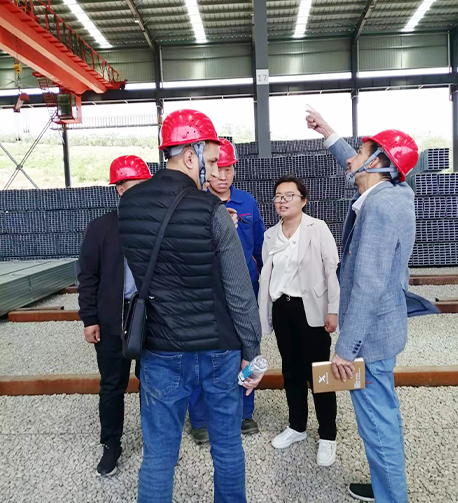ductile manhole cover
The Importance of Ductile Iron Manhole Covers
In urban environments, manhole covers play a crucial role in ensuring the safety and functionality of infrastructure systems. Among the various materials used for manhole covers, ductile iron has emerged as a favorite due to its unique properties and advantages. This article will delve into the significance of ductile iron manhole covers, exploring their benefits, durability, and overall impact on urban infrastructure.
What is Ductile Iron?
Ductile iron, also known as nodular cast iron, is a type of cast iron that contains small amounts of alloying elements such as magnesium. This modification in the production process results in a material that demonstrates remarkable ductility and strength. Unlike traditional cast iron, which can be brittle and prone to breakage, ductile iron has the ability to deform under stress without fracturing. This characteristic is particularly advantageous for products like manhole covers that are subjected to heavy loads and harsh environmental conditions.
Strength and Durability
One of the primary reasons ductile iron manhole covers are favored over their counterparts made from other materials is their unparalleled strength. Ductile iron has a tensile strength that can exceed 60,000 psi, making it capable of withstanding the weight of vehicles and foot traffic with minimal risk of damage. This durability translates into lower maintenance and replacement costs, which is a significant advantage for municipalities and urban planners.
In addition to their strength, ductile iron manhole covers are resistant to corrosion and other environmental factors. This resistance extends the lifespan of the covers, allowing them to remain functional and aesthetically appealing for extended periods. In many cases, ductile iron covers can last for several decades without the need for replacement, reducing waste and contributing to more sustainable urban management practices.
Safety Considerations
ductile manhole cover

The safety of road users is paramount, and ductile iron manhole covers contribute to this goal in multiple ways. First, their robust construction makes them less likely to crack or break under pressure, which could lead to accidents or injuries. Furthermore, ductile iron can be designed to include features such as anti-slip surfaces and reflective markings, which improve visibility and traction for drivers and pedestrians alike.
Moreover, ductile iron manhole covers are often engineered to fit securely in their frames, reducing the risk of covers becoming dislodged. In turn, this minimizes the potential for road hazards, further ensuring the safety of all road users.
Environmental Impact
Sustainability is a growing concern in urban development, and ductile iron manhole covers support this initiative. The long lifespan and durability of ductile iron products mean less frequent replacements, translating into lower resource consumption over time. Additionally, ductile iron is recyclable, allowing old covers to be reclaimed and used to produce new ones, thus reducing waste and the demand for new raw materials.
Cost-Effectiveness
While the initial cost of ductile iron manhole covers may be higher than that of cheaper alternatives, their longevity and reduced maintenance needs often result in lower total lifecycle costs. Municipal budgets are strained, and the ability to invest in durable, low-maintenance infrastructure is a significant benefit. Over time, the savings gained from reduced replacements and repairs can make ductile iron the more economical choice for cities.
Conclusion
In conclusion, ductile iron manhole covers are a vital component of urban infrastructure that offers numerous benefits. Their strength, durability, safety features, environmental sustainability, and cost-effectiveness make them an ideal choice for municipalities looking to invest in long-term solutions. As cities continue to grow and evolve, the role of ductile iron manhole covers will undoubtedly remain critical in maintaining functional and safe urban environments. Embracing the advantages of ductile iron not only enhances infrastructure but also supports efforts toward sustainability and overall urban improvement. As we look to the future, it is essential for planners and engineers to prioritize materials that contribute to safer, more efficient, and environmentally conscious city designs.
-
The Smarter Choice for Pedestrian AreasNewsJun.30,2025
-
The Gold Standard in Round Drain CoversNewsJun.30,2025
-
The Gold Standard in Manhole Cover SystemsNewsJun.30,2025
-
Superior Drainage Solutions with Premium Gully GratesNewsJun.30,2025
-
Superior Drainage Solutions for Global InfrastructureNewsJun.30,2025
-
Square Manhole Solutions for Modern InfrastructureNewsJun.30,2025
-
Premium Manhole Covers for Modern InfrastructureNewsJun.30,2025
